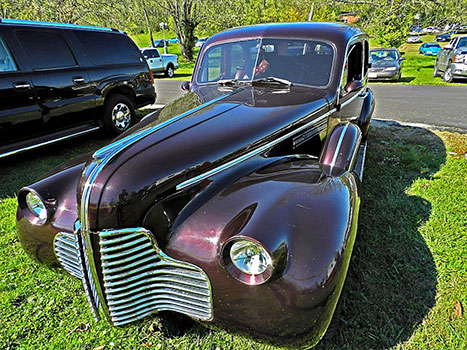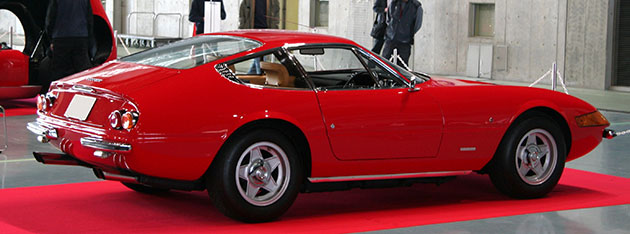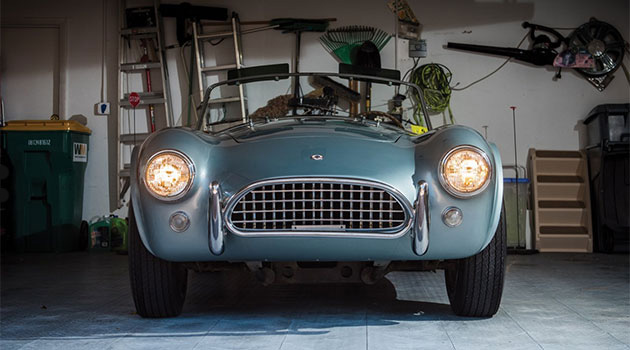Mark Connelly has spent more than 50 years and tens of thousands of hours working on classic cars, fixing everything from broken engines to faded interiors. Most recently, he’s pushing more than 3,000 hours and five years fixing up a 1940 Buick Limited, the kind of car that would compete with Cadillac to shuttle celebrities and other boldface names to high-profile events in the days of the Second World War.
“They were less perfect, mechanically, but they were objects of beauty,” the New Jersey native said. “They’re just beautiful cars.”
Despite his expertise, and his obvious love for the vehicles, Connelly never worked on the rolling art pieces as a professional mechanic. Rather, he looked at the machines as a student of history, a subject in which he holds a PhD.
“If you look at these old classic cars, they’re all jagged,” Connelly said. “It was bad for efficiency, but the designer could do whatever they wanted. You’d have cars that were the opposite of aerodynamic, but they all had a very individualistic look, depending on the company, and stylists had free reign, so the cars looked really different.”
That untethered artistic approach also turns the cars into prisms of the past, allowing an individual to get a feel for developing cultural trends reflected in the changing style lines, experimental features, and even paint color choices of the vintage vehicles.
Access to that overarching historical view is what he likes best about his classic car hobby, Connelly said.
“In general, people have no idea about anything back further than five years,” he said. “The whole society has no sense of history. If you go to a car show and you see these old cars, beginning in 1913 and going into the 1950s, you basically see the development of anything that’s part of our past. It’s the same thing as looking at architecture from the 18th century. It tells you something about where we all came from.”
But it seems fewer people are hearing that message. The collector’s car market has lost some steam recently, with a confluence of cultural and demographic trends seemingly working against it, and unless a new wave of interest rolls in, the lessons gleaned from the vehicles may soon be lost in time.
Low Tides

Perhaps the biggest problem facing the collector’s car market is the lack of collectors.
The ultra-expensive vehicles by far have found their biggest audience in baby boomers, who owned 58% of the nation’s nearly 5 million collectible cars in 2014. But that number has little—if any—room to grow, as the boomers age out of the population. (The latest census showed one-fifth of the country will be 65 or older by 2030.)
And their descendants don’t seem willing to pick up where they left off—for a number of reasons.
The Generation Xers born of the boomers have more debt than any other current age group in the nation, racking up loans putting them, on average, $125,000 in the red. (Nationally, the average amount of consumer debt totals $88,313.)
But, that’s not to say that rising millennials, still some time away from their peak earning years, have any more money to spend on the hobby. Student loan debt has been on the rise for the better part of a decade, saddling the average Class of 2016 graduate with $37,172 in new loans. (Their car loan debt isn’t far behind.)
And many millennials, once bitten, have been twice as shy to extend their credit further in order to sign a mortgage. The generation is more likely to be living at home than any generation of 18- to 34-year-olds since the depths of the Great Depression. (That may also have to do with the fact that nearly half of millennials have less than $1,000 in liquid assets.)
With their own homes to uphold, many in Generation X also lack the time to develop a collector car habit, as the age group is currently at the peak of its social responsibilities, such as raising a family, caring for aging parents, all while maintaining financial stability.
Even when inheritances are passed on from mom and dad, many members of Generation X have been loath to keep the items—perhaps helping lead to the precipitous rise of the storage industry, which was valued at $32.7 billion in 2016 and projected to grow at a clip of 3.4% over the next five years.
And that’s nothing to say of society’s changing tastes, which could take years to come back to appreciate classic car models.
Flooded Market
If the market’s recently sluggish pace is any indicator, however, money may soon not be as much of an issue.
Sales prices for collector cars have slipped steadily since 2014 at the Monterey Auto Auction—a four-day event widely seen as an indicator of the market’s current health. The upscale sale saw a 2% dip in its total haul after a record-breaking 2014, which netted $403 million, and sales prices sagged again—by 15%—the following year. (The downward trend continued, albeit at a slower pace, during the 2017 installment, which brought in $327 million.)
“The prices aren’t gaining like they have in years past,” said San Diego-based classic car dealer Bill Neff. Still, he said that’s just one aspect of an ever-changing market, which he said is “generally good.”
“The market is just maturing,” he said. “People are getting more knowledgeable and they’re recognizing quality and they’re paying for it.”
How will the collectible car survive? According to San Diego-based dealer Bill Neff, “One word: Style.”
That was certainly the case at this year’s Monterey auction, which saw the very desirable Shelby Cobra sell for upwards of $1 million. The only problem: the event included five of the models, and although each sold for nearly the same astronomical amount, experts at collector car insurance company Hagerty estimated that the vehicle could’ve sold for up to 30% more if there were only one Shelby up for sale.
A similar issue occurred this year with equally sought-after Ferrari Daytona Coupes. The 2017 Monterey crop included 8 of them, with the best of all hauling in just $625,000 after being estimated to bring in closer to $950,000. The lower-than-expected winning bid doesn’t just disappoint high-profile auction houses—it completely resets the market price for such cars.
And the trend could become even more exasperated in the future, thanks to a further offset of supply and demand, Connelly predicted.
“The price of these cars is falling, and could be really falling when everyone turns 80 and dumps them all on the market at the same time,” he said. “And that market is very grey-haired. It’s sort of like classical music: you go to a performance, everyone there has grey hair, so the question is, where is the audience going to be in 15 years when all of us are dead?”
Sea Change

Indeed, the new audience of would-be collectors may soon lack the ability to even drive to an auction.
A 2016 study conducted by the University of Michigan found a steady decrease in the average number of Americans obtaining a license, dating back to 1983. Those who do still drive have been found to have increasingly fewer skills, thanks to greater reliance on emerging technologies like back-up cameras and blind spot detection systems.
And future generations likely won’t need to know anything about driving at all, thanks to the largest shift in transportation since the invention of the car itself: the rise of autonomous vehicles.
While automakers are racing to release self-driving models in the next few years, realistic estimates place the total takeover of truly driverless cars closer to 2040, making today’s children likely the last to hold a steering wheel.
The coming changes represent nothing more than the natural ebb and flow of culture, while the beauty of the vehicles is forever, said Neff, a 31-year veteran of the market.
“One word: Style,” he said of why he believes the market will ultimately survive. “Certainly, the cars will be viewed differently, but there are going to be cars that are going to be collected and traded always. If you look at paintings from the 18th century, they may not be things people would paint today, but if anything, they’re more valuable for that reason. They’re looked at from a historical perspective, and the cars will be, too. They’re certainly not going to the junkyard.”
